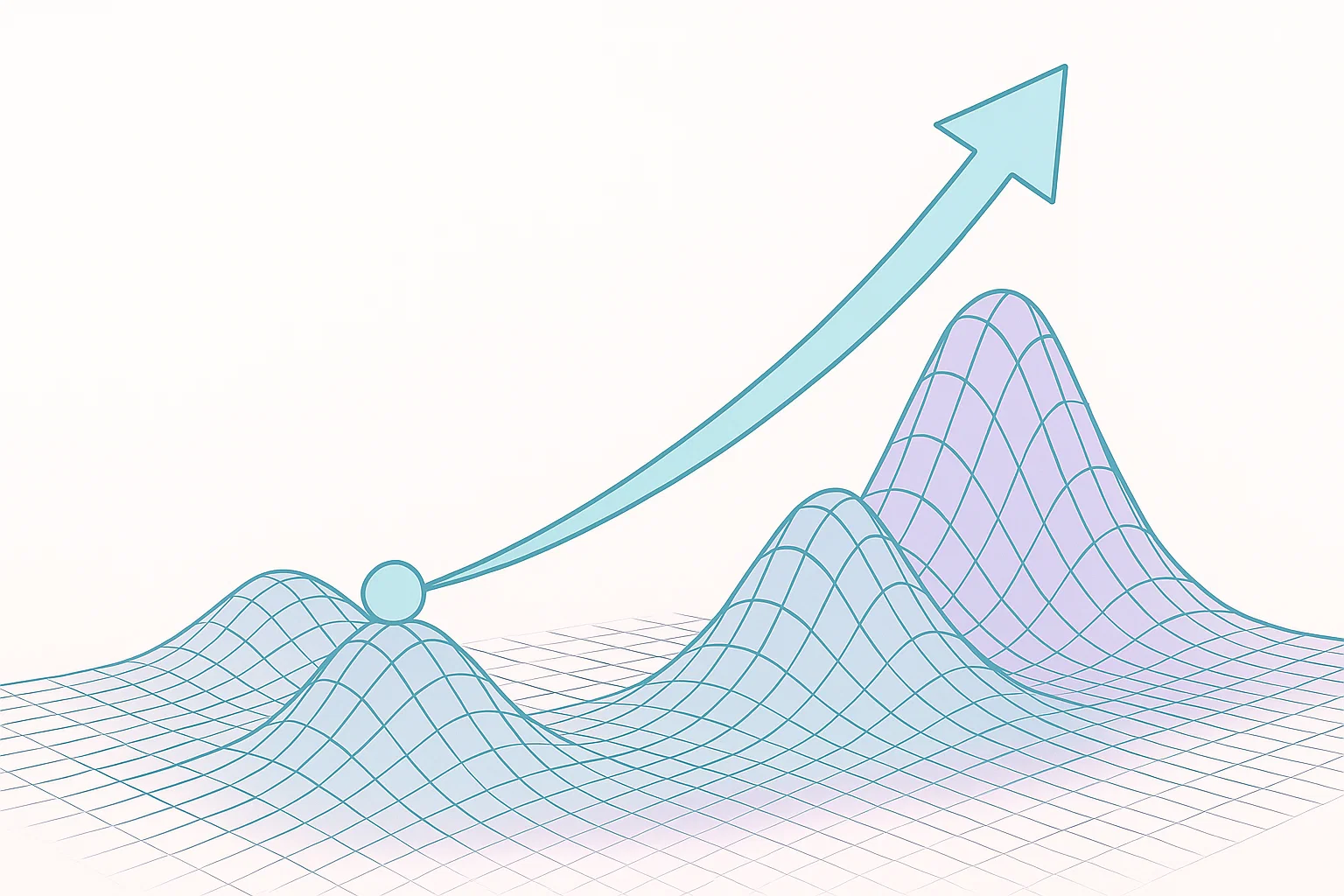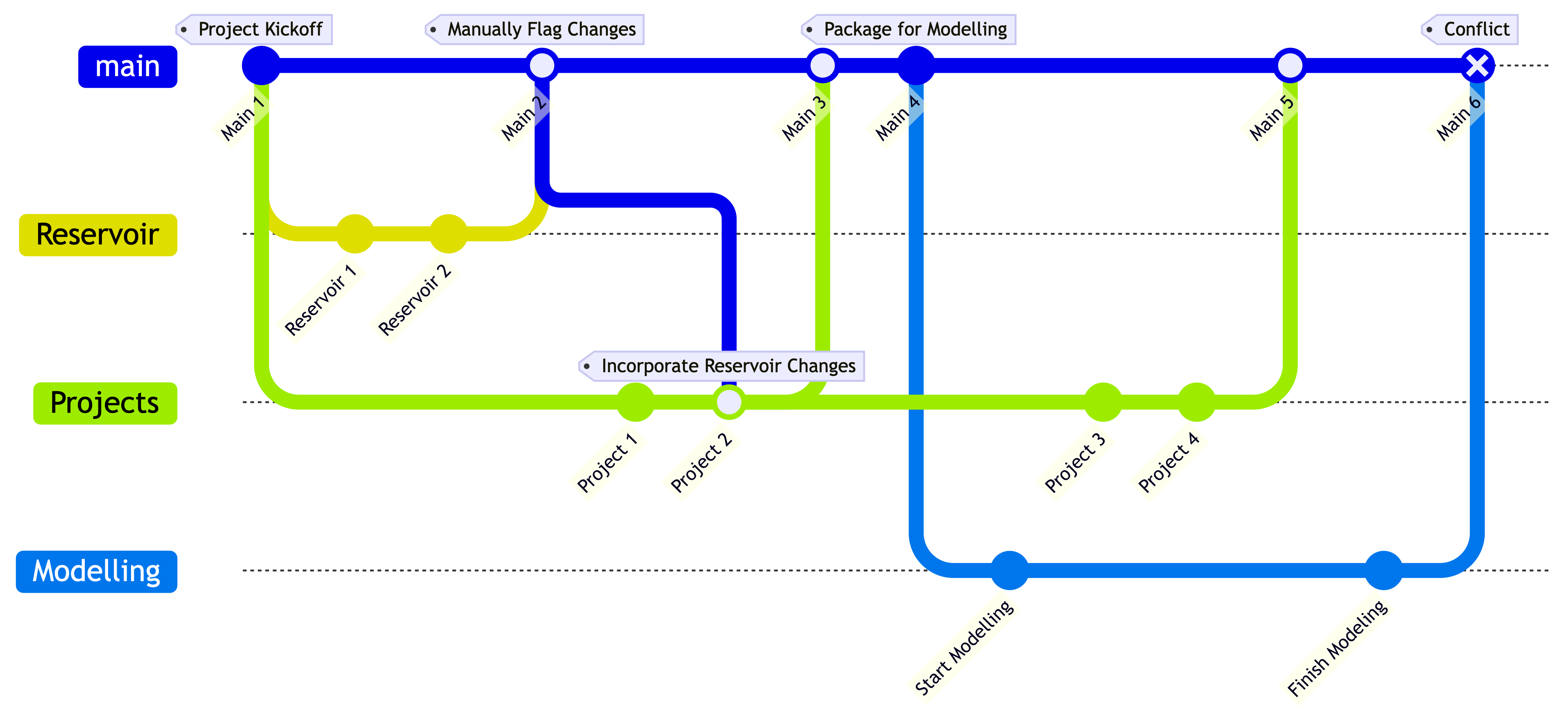Optimal Workflows
Large organisation structures and workflows are often a barrier to highly effective digital transformation. The Deep Insight platform is designed to break down these barriers, enabling teams to work more efficiently and effectively.
Highly complex systems (like an upstream energy operator) have many local optimums in the way they operate. As teams improve their workflows they move towards the peak of their nearby optima. Occasionally, a transformational approach comes along which allows jumping to new area of the solution space with far taller peaks. Deep Insight is an enabler of this transformational approach.

Why traditional workflows stall
Upstream network design originally followed a neat, linear workflow.
Over time this system has been altered to improve turnaround by having teams progress in parallel. This is an organizational evolution which comes with new challenges:
- Design conflicts: teams often miss changes from adjacent groups until the next review cycle.
- Asynchronous updates: modelling results lag behind the latest design revision, so engineers iterate on outdated assumptions.
- Limited accessibility: running scenarios requires specialist tools, limiting who can explore alternatives.
In the example below, Reservoir and Projects iterate concurrently, but the Projects team continues to make revisions while awaiting modelling results. Manual checkpoints exist, yet conflicts still slip through.

A 2-step solution
1. Centralised live model
Deep Insight maintains a live, connected network that pulls straight from corporate GIS data—well locations, pipeline alignments, pipe sizes, elevations, and more. Every change becomes visible on a defined schedule, eliminating email attachments and version confusion while giving every discipline the same context.

2. Network flow modelling
Deep Insight's flow modelling module extends the digital twin by simulating single-phase gas and water movement through the network. It incorporates inflow performance relationships so engineers can forecast well productivity and run new scenarios in their browser without waiting for a specialist handover.
Because the live model already captures the required inputs, swapping the mass balance for a network modelling layer makes rich simulations available instantly. Teams gain the freedom to explore operating strategies, compare designs, and update plans as conditions change.